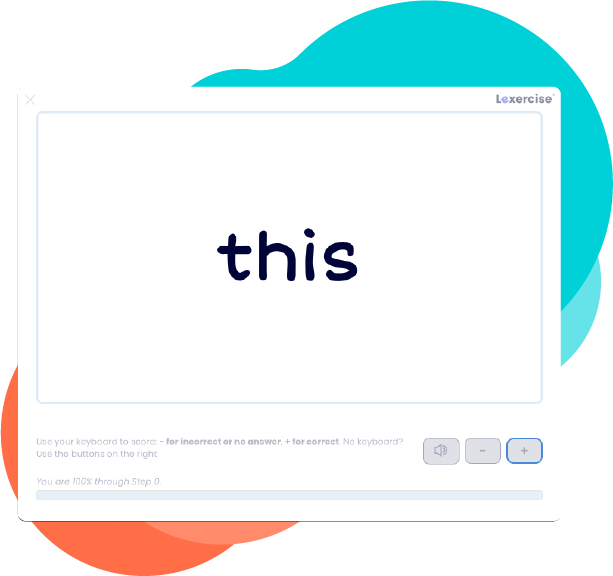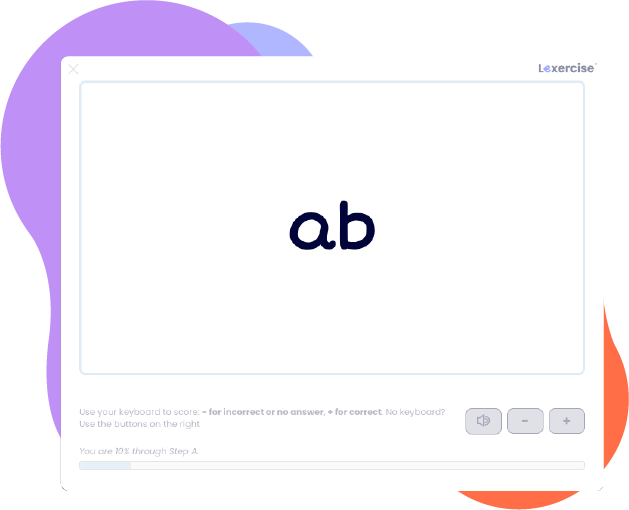How Does the Lexercise Dyslexia Test Work?
Written by Sandie Barrie Blackley, Speech-Language Pathologist
Published on October 13, 2023
The Lexercise dyslexia test combines two separate assessments to pinpoint a child’s ability to read words. One of them is the Grade-Level Word Reading Assessment (also known as the San Diego Quick Assessment or SDQA); the other is the Dyslexia Z-Screener.
What is the Grade-Level Word Reading Assessment?
The Grade-Level Word Reading Assessment (SDQA) uses words categorized by grade level.
Research has confirmed that the Grade-Level Word Reading Assessment provides a fairly accurate estimate of a child’s ability to read grade-level material. The Grade-Level Word Reading Assessment (SDQA) is good for its intended purpose: as a first-step screening procedure. It is not a substitute for a comprehensive reading assessment, which should be done by a qualified professional. While this assessment can raise a red flag and may hint at what is causing the child’s difficulty, it cannot fully explain what is causing the child’s reading problems.
There are many factors that contribute to how well a child comprehends and applies what he or she reads. While no single test can adequately capture that whole, complex picture, the Grade-Level Word Reading Assessment (SDQA) in combination with the Dyslexia Z-Screener has proven successful.

What is the Dyslexia Z-Screener?
The Dyslexia Z-Screener portion uses mostly one-syllable nonsense words that all have short vowel sounds such as ac, zab, zam. The focus is on decoding the vowel and the following consonant or consonants. It is the rime (i.e., vowel) segment that is most difficult for most dyslexics. Thus, the Dyslexia Z-Screener can be useful in describing the decoding patterns common in dyslexia but missed in reading assessments that use only real words that bright dyslexics can memorize as whole units.
The Lexercise Dyslexia Z-Screener scoring is extremely conservative. For example, a 2nd grader will pass it even if they miss as many as one out of every ten words. The Dyslexia Z-Screener will discontinue once the child misses five words in one level. Kindergarteners and 1st graders should be reading at 50% or higher on the Dyslexia Z-Screener portion while 2nd graders and above should score 90% or higher. Anything lower than these benchmarks indicates a need for dyslexia therapy.
Connect with a Dyslexia Teletherapist for a Free Consultation
The simple nonsense words in this assessment increase in complexity in nine bands labeled A through I. The assessment automatically stops when the student makes five errors in a band because it is unlikely the student will have success in the higher, complex bands.

Identifying a Risk for Dyslexia
With its combination of the extensively-researched results of the Grade-Level Word Reading Assessment with the results of the Dyslexia Z-Screener, the Lexercise online dyslexia test is a powerful, science-backed, tool that allows the parent, teacher, and/or pediatrician to determine if the child could benefit from structured literacy therapy. It’s convenient, fast, and free.
Watch this video to learn how the Lexercise Dyslexia Screener works. When you are ready, head over to our dyslexia test page to take our free dyslexia test with your child or our dyslexia quiz if your child is not with you.
Improve Your Child’s Reading
Learn more about Lexercise today.
Schedule a FREE
15-minute consultation


